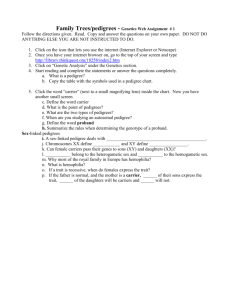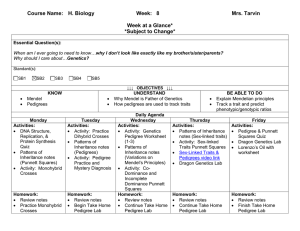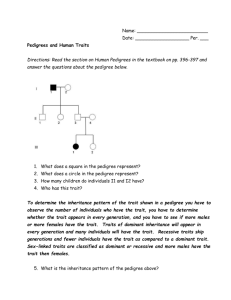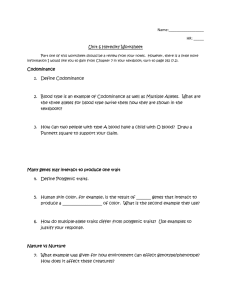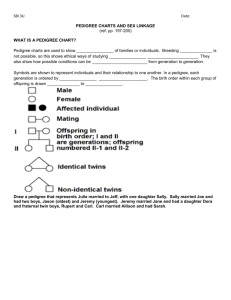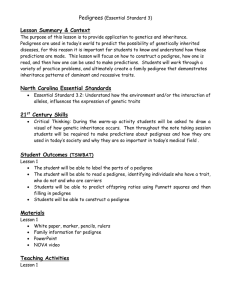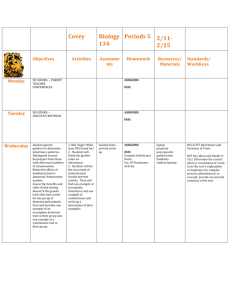Family Pedigree - Shelby County Schools
advertisement
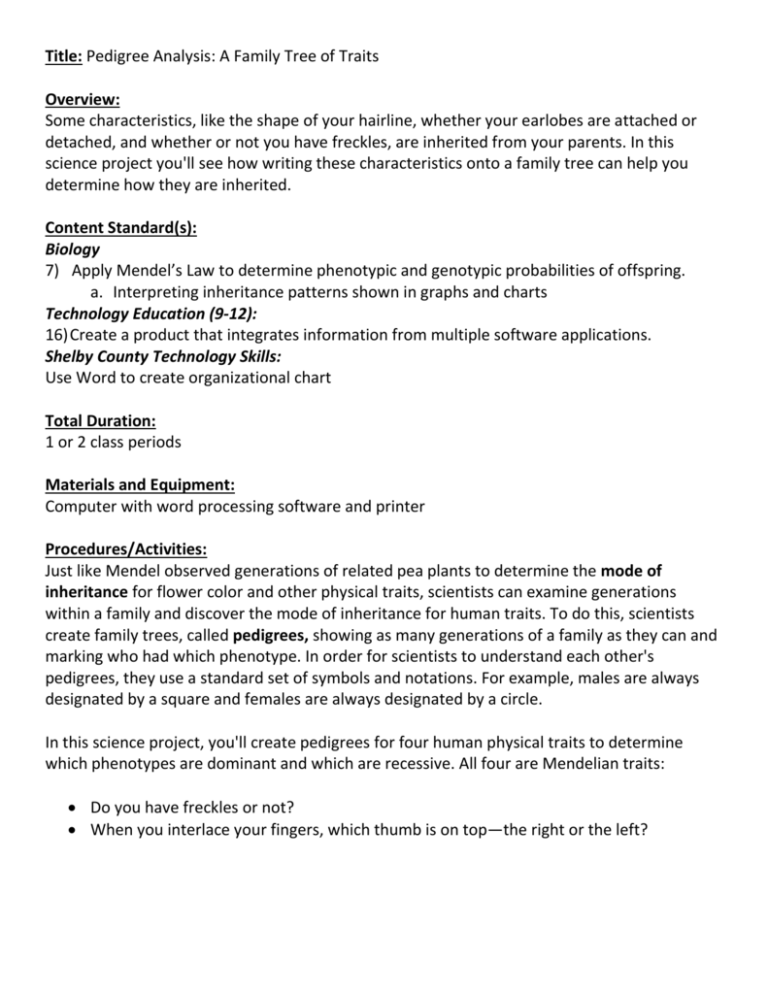
Title: Pedigree Analysis: A Family Tree of Traits Overview: Some characteristics, like the shape of your hairline, whether your earlobes are attached or detached, and whether or not you have freckles, are inherited from your parents. In this science project you'll see how writing these characteristics onto a family tree can help you determine how they are inherited. Content Standard(s): Biology 7) Apply Mendel’s Law to determine phenotypic and genotypic probabilities of offspring. a. Interpreting inheritance patterns shown in graphs and charts Technology Education (9-12): 16) Create a product that integrates information from multiple software applications. Shelby County Technology Skills: Use Word to create organizational chart Total Duration: 1 or 2 class periods Materials and Equipment: Computer with word processing software and printer Procedures/Activities: Just like Mendel observed generations of related pea plants to determine the mode of inheritance for flower color and other physical traits, scientists can examine generations within a family and discover the mode of inheritance for human traits. To do this, scientists create family trees, called pedigrees, showing as many generations of a family as they can and marking who had which phenotype. In order for scientists to understand each other's pedigrees, they use a standard set of symbols and notations. For example, males are always designated by a square and females are always designated by a circle. In this science project, you'll create pedigrees for four human physical traits to determine which phenotypes are dominant and which are recessive. All four are Mendelian traits: Do you have freckles or not? When you interlace your fingers, which thumb is on top—the right or the left? Do you have attached earlobes or detached earlobes? Some people's hairlines come to a V-shaped point above their forehead. This is called a widow's peak. Do you have one or not? To start this project, you should create a pedigree in Word showing the different members of your family. Include as many family members as you can get data from. The more people and generations you include, the more likely it is that you'll have enough information to determine the mode of inheritance. You might need help from your parents to figure out all the relationships. Make four copies of the pedigree—one for each trait you are going to evaluate. Determine the phenotype of each person on your pedigree for each of the four traits. Use a separate pedigree for each trait. Note: Widow's peak can vary considerably; score any sort of V-shaped hairline as positive. From your pedigrees, can you deduce the mode of inheritance for each trait? For which traits is your pedigree informative? If you don't have enough information to determine the mode of inheritance of a particular trait, try making a pedigree for another family.

